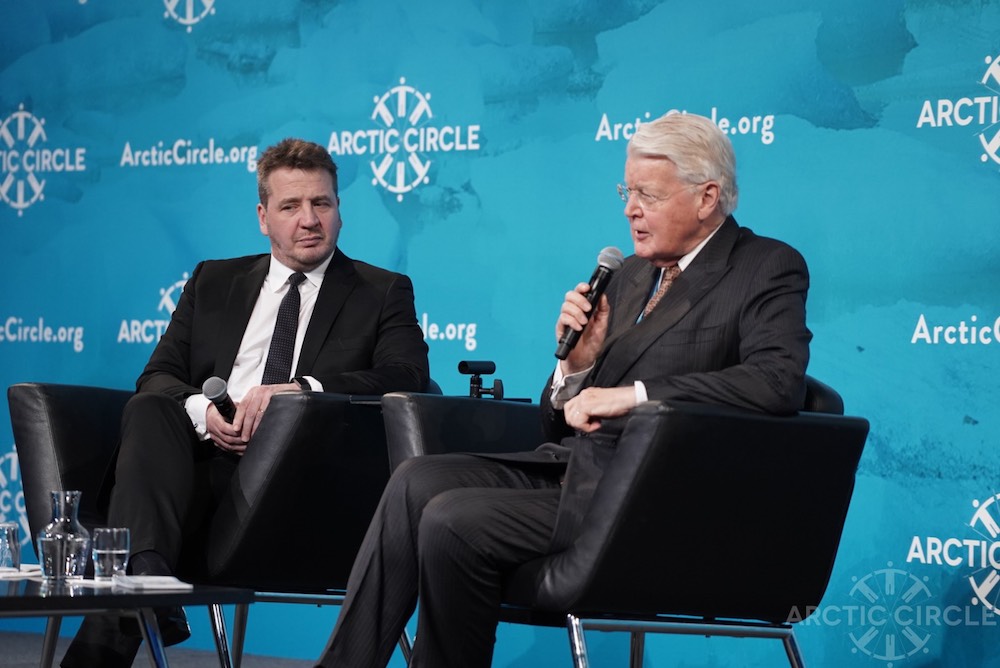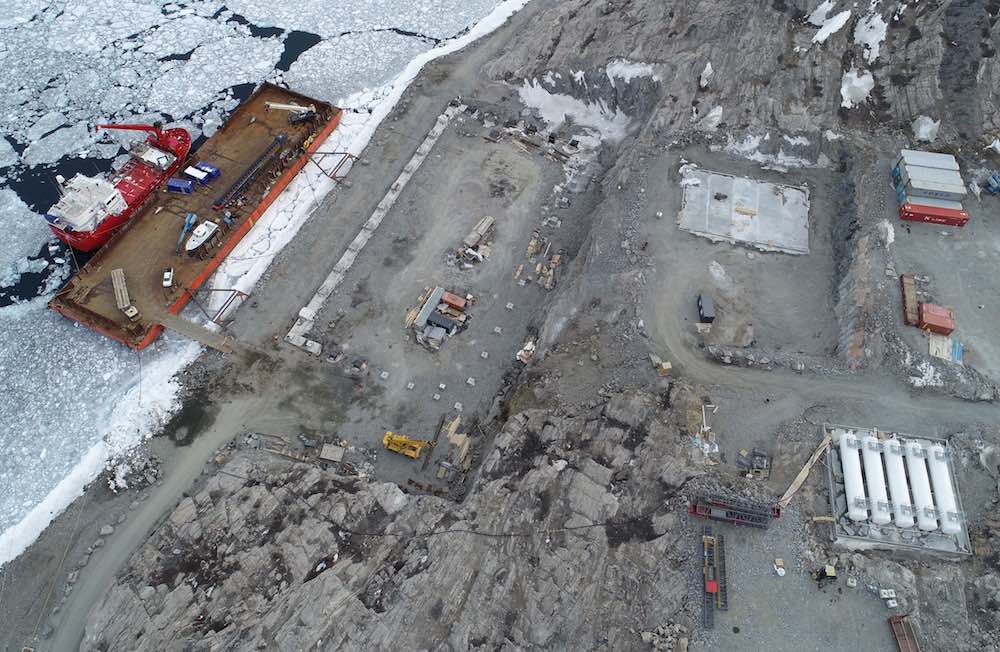The Week Ahead: First among many
The venue Iceland chose to reveal the direction of its Arctic Council chairmanship says just as much as the topics it will prioritize.

The Arctic Council has never made much use of the Arctic Circle, a big annual conference held in Reykjavík, Iceland, each October: It was not present the first year, and during ensuing sessions it has mostly stuck to the sidelines. Senior Arctic Officials, the diplomats and senior civil servants representing Arctic states on the council, don’t make a point of attending. One insider describes the two as “frenemies, but not good ones.”
Iceland, however, will be the council’s next chair, which made this year’s Arctic Circle an ideal opportunity to offer some insights into the topics it will pursue once it takes over the job in May. During the conference’s final day, for example, Guðlaugur Þór Þórðarson, Iceland’s foreign minister, used his time on stage to publicly air, for the first time, the direction Reykjavík hopes to take the council.
In broad strokes, the main topics, according to Þórðarson, will deal with issues like oceans, energy, social and economic development and climate. Reykjavík has marched its proposed priorities around to the other Arctic states, but, before it reveals specifics, it will ask the SAOs to give them and additional going over this coming week when they gather in Rovaniemi, Finland, for their penultimate gathering ahead of the handover.
[Trident Juncture 2018: Force projection]
Typically, chairmanship priorities reflect national interests, with perhaps one or two of the previous priorities thrown in for continuity’s sake. Finland, the current chair, adopted ‘connectivity’ from its predecessor, the U.S., which had made a big push for improved telecommunications in the region.
The Icelandic priorities appear to leave some room for overlap with Finland’s four focus areas, although an Icelandic plan to make ‘data transmission’ a priority of its concurrent chairmanship of the Arctic Economic Council would seem to suggest that responsibility for the telecoms issue will be left to the businesspeople.
But if those attending this week’s closed-door SAO meeting will get the chance to openly discuss Reykjavík’s council priorities, they may have to resort to more subtle clues about whether Þórðarson’s decision to make an address at Arctic Circle was a statement of intent that it will seek to push the Arctic agenda with other audiences, or just a matter of taking advantage of an opportunity to address a crowd of the Arctic-minded on his home turf.
[Environment, education top agenda at first Arctic Council meeting under Finnish leadership]
One hint is that Þórðarson pointed out that, in addition to its twin Arctic chairmanships, Iceland will have a seat on the UN Human Rights Council and the board of the World Bank, and that it will chair both the Nordic Council of Ministers and its foreign minister’s co-operation outfit, as well as an organization for promoting better relations amongst Nordic and Baltic countries. Each of these organisations, he reckons, can be used to further Arctic issues in their own way.
“International efforts carried out in these fora, be it human rights, including indigenous rights, financing for development, environmental protection, innovation and social well-being – to mention only a few – have a direct relevance for the Arctic agenda,” he said.
Iceland is not going to work against the Arctic Council: Þórðarson and others in foreign ministry say Reykjavík supports a stronger council, and that it does not disagree with the Arctic Council’s description of itself as “the preeminent forum for addressing Arctic issues.” The question, though, is whether the incoming chair sees it as the only place for addressing Arctic issues.
And then there were two

Greenland has a single operational mine. As soon as this week, it may have two. Hudson Resources, a Canadian firm, announced earlier this month that construction of its Qaqortorsuaq anorthosite mine was 95 percent complete. The last thing to tick off the to-do list before operations can begin was a 500-meter (1,600-foot) stretch of road linking the mine to the port from which the mineral, used in things like fiberglass, paint and aluminium smelting. The first shipment is expected to be sent in December or January.
There is no doubt that more mines will open. By 2022, as many as four could be up and running, according to the Self-Rule Authority’s most recent projection. Of more concern for Nuuk, should be whether Greenland is getting the most out of them, particularly when it comes to getting its people into the jobs the mines create.
[As industry rebounds, likelihood of new Greenlandic mines grows]
Hudson, for example, has 34 people working at Qaqortorsuaq. As part of its agreement with the Self-Rule Authority, half of them need to be hired in Greenland. Hudson is willing to do so, but a lack of qualified candidates has made living up to this goal impossible. Eventually, the requirement will increase to 80 percent of its 61 employees.
For Hudson, this has been a hurdle, but not a roadblock: It has been permitted to recruit workers in Denmark and Canada who can run the mine while it trains locals. Other firms thinking about getting involved in Greenland would need similar deals if they are to be certain they can staff their operations.
This is a break they would probably get. Greenland is eager to get its mining industry off the ground. Nuuk is likely to realize that operations with fewer Greenlandic miners than it would like is better than no activity at all.
The Week Ahead is a preview of some of the events related to the region that will be in the news in the coming week. If you have a topic you think ought to be profiled in a coming week, please email ne**@ar*********.com.